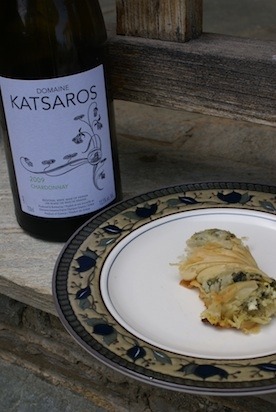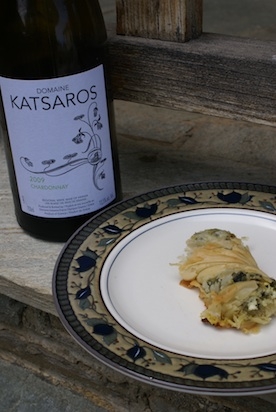The Lows And Highs Of Greek Wines
Greece is undergoing a renaissance in winemaking these days, and two of the most interesting places that wine is being made are at opposite sides of the compass — the spent volcanic island of Santorini in the Cyclades Islands and the upper reaches of Mount Olympus in Macedonia in Greece's mountainous north.
Santorini, aka Thera or Thira, is becoming famous for two treatments of the same grape — Assyrtico, which is known for its freshness and acidity. Both qualities are ideal in a dry white table wine, which is one reason Assyrtico is selling well in the United States and garnering modest wine bar attention. Although the wines taste somewhat different, if you like Sauvignon Blanc, you will probably enjoy Assyrtico.
But Assyrtiko's fresh fruitiness and crisp acidity are also ideal as the prime ingredient for a sweet dessert wine the island has long been producing: vinsanto (one word). It is similar to, yet different from, Italy's vin santo (two words), which the Greeks consider to be a vinsanto-come-lately. The Greeks say they invented the category, and, besides, Italy dries its grapes indoors while Santorini's are sun-cured.
Vinsanto is a complex wine that is late-harvested after sugar concentrates in the grapes, which are then left in the sun for a week or two to further dry. Fermentation usually begins during this period because of indigenous yeast natural to the grapes, but it starts in full after the crushing and continues on and off through much of the life of the wine. Barrel aging for at least two years, but generally more, finishes off the process.
The result is a wine that is sweet but generally well-balanced with lots of savory flavors to match. You may also be tempted after a glass or two to discover the minerality from the volcanic soil and a touch of salt from the sea air.
Over the last 20 years, Katsaros Estate has patched together 23 acres of vineyards in 21 separate plots, each one a very small little nook where the gods of Olympus have seen fit to allow a few vines on a spot that isn't too rocky or steep.
Here they grow only three international varieties to make three wines — a Chardonnay, a Merlot, and a Cabernet Sauvignon-based estate red. All three are available in the United States.
Of course, there are other prominent grape-growing regions on Greece's mainland and in its many isles, but these two opposites show the delicious versatility of Greek winemaking and the diverse beauty of the vineyards where the grapes are grown.

